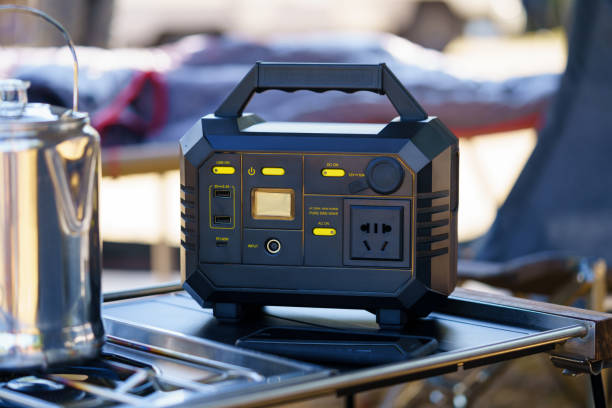Linear Power Supply vs. Switching Power Supply: Key Differences and Applications

Competitive industrial automation supply requires that only the best power supply systems are sought after in order to provide the best services. Two types of power supplies are recognized as being most typical- linear power supplies and switching power supplies. Therefore it is important that engineers and system designers know the differences and advantages of each and how they may be used. In this article the author focuses on the most important features of these two types of power supplies and their application in industrial automation.
Explaining Linear Power Supply
A linear power supply is used in circuit designs by first using a transformer to bring down the input voltages to the required levels, and then rectify the output along with regulating it in an attempt to form a stable DC voltage. This simple design is one of the biggest strengths of the circuit, because it offers dependability and generates very little noise or ripple. They are most appreciated and used in applications where there is need for a stable voltage and current output such as in medical equipment, laboratory measuring instruments, and sound equipment. These devices require clean power which if interfered with will lead to inaccuracy of the device or degrading of its performance.
However, linear power supplies have some serious drawbacks, such as power supply inefficiency. They let out excess power in the form of heat which causes a considerable amount of power dissipation which might be a problem if the utilization of power is high. Additionally, large transformers are used and in many cases they are bulky and heavy making them unsuitable for use in small or transportable systems. Still, these are extremely straightforward and highly reliable designs for environments where the importance is placed on performance at the cost of such factors as size or power consumption.
Understanding Switching Power Supply
There exist power supply solutions more superior to the step-down power supply we have been discussing; a switching power supply. It works at high frequencies where the switch current is firstly turned on and then suddenly turned off and vice versa. This approach ensures that only a small amount of power is wasted and this makes switching power supplies be among the most efficient being capable of reaching 90% or more. Another major strength of their design is that they are comparatively small and light, for which reason they may be easily integrated into quite constrained devices.
Switching power supplies are being used in many industrial automation supply systems, consumer electronics, and telecommunication equipment where energy efficiency and flexibility are important. But the high frequency switching process results in a higher level of noise and ripple content which creates more interference and it affects the noise sensitive circuit if not eliminated. To overcome this, designers use methods of filters such as multi-layered filters to minimize the unwanted Electromagnetic Interference (EMI) that affects the operating capability of the designed power supply. Actually, switching power supplies are very versatile, and therefore ideal for dynamic and high power systems with changing loads.
Key Differences
Several features distinguish linear power supply from switching power supply when power supply types are analyzed. The linear power supplies are quite popular as they do not produce noise and provide clean power to the equipment under usage. These are for instance in the medical instruments, scientific instruments for measurement, and audio processing instruments where variation in power in the slightest degree affects the performance of equipment. However, switching power supplies are efficient with size, which is more important in energy-saving and miniaturized machines such as robotics and automation systems and portable equipment and devices.
However, the use of switching power supplies has the disadvantage that such circuits tend to incorporate high-frequency oscillations that produce noise, which can be filtered if necessary. Cost is another clear difference; linear power supplies are usually cheaper to produce, yet after a period, they may be more costly to run because of poor efficiency. AC to DC converters, which are somewhat more expensive initially, have been shown to be more efficient in the long-run because they use less power. They indicate that while both types are readily available, it is crucial to define a particular application in detail because each type has its advantages and disadvantages.
Selecting a Power Supply for Industrial Automation Supply
The options for selection of the power supply for industrial automation supply applications depend on efficiency, noise level, size, and costs. For example, where efficiency and size is paramount, switching power supplies are preferable for applications. They are widely employed in industrial robots, automated manufacturing lines, and conveyor systems because the loads they transport as well as the conditions under which they operate change dynamically. They are also easy to install because of their light and small size compared to the traditional kinds, which is well suited for the latest automation systems because of the limited space. Nonetheless, for use in particular systems that are sensitive to noise and require stable power, the use of linear power supplies is preferred.
They specialise in applications where clean power is essential for the correct operation of precision instruments that the trio manufacture; audio processing systems and sensitive medical equipment. The heat dissipation as well as other operating conditions of the environment should also be taken into account. It is a challenge for linear power supplies to operate in high power applications since they are inefficient compared to the switching power supplies which come with issues like noise and EMI that require extra design efforts. Using these aspects to pass-through or selection criteria, engineers are able to select a suitable power supply to meet the requirements needed in the given application while keeping overall costs as low as possible.
Final Thoughts
Understanding the differences between linear power supply vs switching power supply is essential for making informed decisions in industrial automation supply systems. As linear power supplies, devices are extremely effective in providing clean, low noise output making them perfect for use in critical applications. On the other hand, switching mode power supplies are more popular where energy density, size and flexibility play an important role. Understand that this power supply acts as the key that meets the requirements of your specific application, whether noise sensitivity, power consumption, size requirements, or operations costs.
An informed decision does not only enhance system performance, it also enhances operational reliability of the system and possibly the cost of doing so. In that context, knowledge of how to utilize the ‘soldier strengths’ of MOS or LLC power supply technologies becomes a focal point in industry automation definition.




